


|
 |


Search alphabetically by author
A B C D E F G H I J K L M N O P Q R S T U V W X Y Z

A

The Heavens on Earth: Observatories and Astronomy in Nineteenth Century Science and Culture David Aubin, Charlotte Bigg and H Otto Sibum

This book is a collection of twelve papers resulting from a workshop held by the celebrated Experimental History of Science Independent Research Group of the Max Planck Institute for the History of Science in Berlin. The workshop’s aim was to present the observatory as a centre of scientific measurement and astronomical investigation, and remove the perception of it being an amateur telescope store house in a small garden or monolithic structure sited in a remote location. This aim was achieved...
|

|
 |

READ MORE |

B

Developments in Amateur Astronomy BAA DVD

At the end of last year Patrick Moore celebrated 75 years of unbroken membership in the British Astronomical Association. To celebrate this happy and remarkable event the BAA booked the historic Royal Institution Faraday lecture theatre for Saturday November 21st. The tickets sold out very quickly and ten speakers (including myself, covering planetary imaging) were invited to talk about ‘Developments in Amateur Astronomy – Past, Present and Future’. High quality video recordings of these talks form the bulk of this splendid four DVD set...
|

|
 |

READ MORE |

The 50 Most Extreme Places in Our Solar System
David Baker and Todd Ratcliff

This planet on which we find ourselves is part of a larger, unforgiving and extraordinary environment; it’s kind of like growing up all safe and warm but in the middle of a busy road....
|

|
 |

READ MORE |

ET Talk
Fernando J Ballesteros

This somewhat uneven book attempts to investigate how we might communicate with postulated extraterrestrial intelligences, implicit in which is the fact that even if extraterrestrial civilisations (ETCs) don't exist, we will at least learn something about ourselves as we look for new ways to communicate....
|

|
 |

READ MORE |

Mars 3D -
A Rover's-Eye View of the Red Planet Jim Bell

Jim Bell is a planetary scientist working on those intrepid Martian rovers Spirit and Opportunity. But just like you and especially me he has that childlike love of everything 3D. This passion for Mars is rolled out over 160 pages in this beautiful and well-captioned book, with over 60 images in anaglyphic stereo, some in full colour...
|

|
 |

READ MORE |

A Question and Answer Guide to Astronomy
Pierre-Yves Bely, Carol Christian, Jean-René Roy

This delightful little volume is written as though the authors loved their subject too much to write it as a textbook. While it's aimed at students and those wishing for a well-rounded coverage, it's full of lovely quirky extras, such as that sunspots shine about as bright as the full Moon!...
|

|
 |

READ MORE |

1001 Celestial Wonders to See Before You Die Michael E Bakich

With the growth of amateur astronomy, visual observing guides have come and gone, constantly re-inventing the wheel. Some are overly descriptive, while lacking in important information. Other guides are overly myopic, confining their narrative to the appearance of an object as seen by only one size of telescope. And some of the best guides are now hopelessly outdated...
|

|
 |

READ MORE |

Turning Dust to Gold Haym Benaroya

This work opens with the statement “This book is an historical work based on a group of documents discovered in an old repository that chronicled the settlement of the Moon during that twenty-first century and into the twenty second century”. Written from the perspective of the year 2169 the author articulates that the International Space Station became the staging post for a space elevator, the first Moon birth occurred in 2099 and details how families, schools and business were established on the Moon...
|

|
 |

READ MORE |

Far Out – A Space-Time Chronicle Michael Benson

It’s fair to say that these days we are spoiled with the choice of large-format coffee table books which show gorgeous astronomical pictures but from the very outset I was aware that this book is something special. Measuring just under 12 inches square and quite weighty this is a collection of some of the best deep space images ever shown in a single volume. The print quality is absolutely first rate as is the layout, giving a book that is very easy to dip into and marvel at the beauty of the deep sky...
|

|
 |

READ MORE |

The Complete Guide to the Herschel Objects Mark Bratton

It’s time to dust off your telescopes and binoculars, leave your laptops behind and go outside under the stars, for Mark Bratton has set a fantastic challenge – to find over 2,400 objects from the Herschel catalogue. It’s a challenge that will appeal to beginners and experts alike...
|

|
 |

READ MORE |

The Dark Side of the Moon: Werner von Braun, the Third Reich and the Space Race
Wayne Biddle


One Giant Leap: Apollo 11 Forty Years On Piers Bizony



Shrouds of the Night David L Block and Kenneth Freeman

This book, subtitled Masks of the Milky Way and Our Awesome New View of Galaxies, is essentially a chronology of astronomical photography from 1826 to the present day. Whilst the preamble is poorly written, Vera Rubin's preface clearly sets context by explaining that the book is intentionally unconventional. The commentary by the authors occasionally alludes to religious beliefs but these in no way devalue the astronomical enquiry governed by the selection of images included...
|

|
 |

READ MORE |


Solar System Moons Jurgen Blunck

This work primarily concerns itself with the discovery and subsequent naming of our current tally of planetary satellites; a tally incessantly growing. Indeed, Blunck comments that only 50 years ago, the known moons of the major bodies totalled 28; yet thanks to unmanned space probes and the CCD the score now stands at 170...
|

|
 |

READ MORE |


The Crowded Universe - The Search for Living Planets Alan Boss

This book surveys the whole field of exoplanet research from an American perspective. Okay, so the author is an American, but contrary to the ethos of cooperation one expects in science the trans-Atlantic exoplanet hunters are portrayed in fierce competition with one another...
|

|
 |

READ MORE |


The Astronaut's Cookbook: Tales, Recipes and More Charles T. Bourland and Gregory L. Vogt

When you next sit there with your pre-prandial glass of Sancerre, the smell of fresh bread coming from the kitchen, looking forward to your steak au poive, pomme dauphinois, and a bottle of Chateau Petrus, think of the orbiting astronaut, grasping his weightless beverage package, and re-hydrating his freeze-dried thermo-processed space meal...
|

|
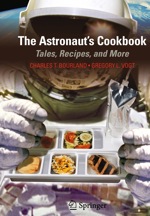 |

READ MORE |


Women in Early British and Irish Astronomy Mary Bruck

This is the first real account of women that were either astronomers in their own right or assistants that became astronomers during the eighteenth, nineteenth and early twentieth centuries. Essentially the book assesses the period of the Enlightenment when much of philosophy became science and when particularly the grand amateurs led the way in astronomy. Although written in an academic style, the book will appeal to both academia and the general reader...
|

|
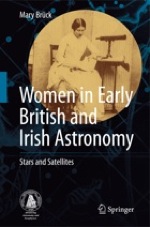 |

READ MORE |


An Introduction to Radio Astronomy Bernard F. Burke and F.Graham-Smith

This is the third edition of the classic textbook written by two of the world's leading radio astronomers. It provides a comprehensive review of the subject, both in terms of the instruments and techniques employed and the knowledge of the Universe that are revealed by them...
|

|
 |

READ MORE |

C
Drifting on Alien Worlds: Exploring the Skies and Weather of Other Worlds Michael Carroll

The oceans of air that planets and even some moons in our Solar System possess are fascinating realms to which this book really does justice. The dynamics, structures and cycles of Earth's turbulent atmosphere and those of other worlds are fully explored along with atmospheric phenomena and instabilities that give these masses of gas their charm and beauty. ...
|

|
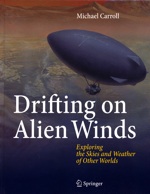 |

READ MORE |

Tweeting the Universe Marcus Chown, Govert Schilling

As a Twitter addict, I especially enjoy following scientists and science writers and one of my favourite people to follow is Marcus Chown (who also wrote my favourite science book, The Magic Furnace). A few weeks ago I began to notice that he would tweet a series of fascinating science facts under the heading ‘Tweeting the Universe’. These would stop as abruptly as they would start, and, unusually for him, he didn't reply to my questions about them. It turned out to be a delightful project he and Govert Schilling, another well-known science writer from the Netherlands, have been hard at work on...
|

|
 |

READ MORE |

Hidden Universe Lars Lindberg Christensen, Robert Fosbury and Robert L Hurt

'Continuing the excellent writing style and presentation from Eyes on the Skies, Hidden Universe looks at how astronomers use different kinds of telescope to look at the Universe in different wavelengths...
|

|
 |

READ MORE |

Cosmic Collisions - The Hubble Atlas of Merging Galaxies Lars Lindberg Christensen, Davide de Martin, Raquel Yumi Shida

This large format book by the team at ESO is a collection of galaxy pictures courtesy of the Hubble Space Telescope. Over eighty images, all full colour and many blown up to a full page, easily make this one of the more beautiful books of the year. The text follows the evolution of galaxies, from how they formed, their properties and different types, and their eventual coalescence in mergers...
|

|
 |

READ MORE |

Amateur Telescope Making In the Internet Age Robert L Clark

Resting in an honoured position on my bookcase are the three volumes of Ingall’s classic, Amateur Telescope Making. Their post-war contents encapsulate the ingenuity of amateur astronomers in bending arcane materials to the pursuit of the heavens. I was eager to find out from this book how their equivalents in this ‘Internet age’ are dealing with the same challenges...
|

|
 |

READ MORE |

Measure Solar System Objects and their Movements for Yourself! John D Clark

Everyone knows that Venus goes around the Sun, and that the Moon is a quarter of a million miles away from Earth. But did you ever bother to check for yourself that these taken-for-granted assertions are actually true, and how do you do it? This delightful book by John D Clark is really a breath of fresh air in popular science publishing, taking us back to astronomical basics and starting from the beginning...
|

|
 |

READ MORE |

The Big Questions - The Universe Stuart Clark

The publishers are to be congratulated on the way this book has been presented. I remember that 20 questions was a popular radio programme some years ago but it could never have covered either the range or the expertise contained in this book. Each of the 20 questions is answered in some ten pages as effectively as some of the complete books I have reviewed in the past few years that covered only a part of the subject of an individual question...
|

|
 |

READ MORE |


Antimatter Frank Close

'The Physics of Angels and Demons' might have been an alternative title for this book, which certainly appears to have been inspired by Dan Brown's novel and its recent film adaptation. Its aim is to provide answers to some fascinating questions. Is the manufacture of an antimatter bomb a practical possibility? Has the US military really shown an interest? Could we one-day use antimatter to power a spacecraft? And could the 1908 Tunguska event have been caused by an antimatter comet?...
|

|
 |

READ MORE |


Chasing the Sun Richard Cohen

Richard Cohen’s Sun is different. Cohen is a journalist, a publisher and a professor of creative writing. The Sun he writes about is the muse of novelists and poets, the guide star of navigators, the object of reverence of a host of primitive religions, the light of our darkness and the inspiration of painters...
|

|
 |

READ MORE |


Turn left at Orion Guy Consolmagno and Dan Davis

Turn left at Orion has enjoyed enormous success with amateur astronomers and rightly so, since it brought 100 celebrated celestial objects within easy reach of the novice star gazer, with its exceptionally clear guidelines on how to find and observe them. By popular demand, authors Consolmagno and Davis have teamed up again to produce this thoroughly revised fourth edition...
|

|
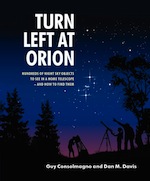 |

READ MORE |


The Story of Astronomy Heather Couper and Nigel Henbest

This book first appeared in 2007 under the title of The History of Astronomy. Although this new edition is not presented in the same format, I am pleased it has retained its bright and breezy quality...
|

|
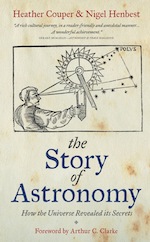 |

READ MORE |


Lunar Meteoroid Impacts and How to Observe Them Brian Cudnik

The 18 November 1999 Leonid Meteor Storm allowed amateur astronomers, for the first time, to record something new occurring on the lunar surface. The sheer volume of meteors streaming through the Earth–Moon environment meant that observers positioned where I was (in the Sinai desert) could count almost one meteor every second and observers elsewhere, where the Moon was above the horizon, could detect a dozen or so faint flashes on the Moon’s unlit portion...
|

|
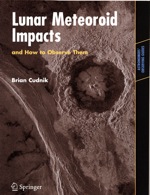 |

READ MORE |

D

The Eerie Silence Paul Davies



Carnarvon and Apollo: One Giant Leap for a Small Australian TownPaul Dench and Alison Gregg



Cosmos & Culture: Cultural Evolution in a Cosmic Context Steven J. Dick & Mark Lupisella



At the Edge of the Solar System: Icy New Worlds Unveiled Alain Doressoundiram and Emmanuel Lellouch



Portraits of Astronomers
Lucinda Douglas-Menzies



Space Conquest - The Complete History of Manned Spaceflight Francis Dreer



Practical Astronomy with your Calculator or SpreadsheetPeter Duffet-Smith and Jonathan Zwart


Collins Night Sky and StarfinderStorm Dunlop and Wil Tirion



The Telescope - A Short History Richard Dunn


Asteroids and Dwarf Planets and How to Observe Them Roger Dymock


E

Choosing and Using a Dobsonian TelescopeNeil English



Choosing and Using a Refracting TelescopeNeil English


F

Naming Pluto (DVD) Father Films


The Mythology of the Night Sky David E Falkner


About Time Adam Frank


Deep Sky Wonders: A Tour of the Universe Sue French



Thomas Harriot: An Elizabethan Man of Science Robert Fox


G

Galileo - Images of the Universe from Antiquity to the Telescope Paolo Galuuzzi

Timed to coincide with the IYA’s global celebration of the four-hundredth anniversary of Galileo’s groundbreaking work in viewing both the Moon and Jupiter, this epic book, sponsored by dozens of institutions and with a preface and forward list that lasts over 20 pages, sets its stall firmly in the realms of coffee table-sized masterpiece...
|

|
 |

READ MORE |


The Cosmic Keyhole Will Gater

It's not often I come across a book that puts the 'wow!' factor into astronomy. This latest offering from former Astronomy Now contributor Will Gater is certainly one of them. This is a journey through astronomical discoveries past, and what we have learned from and since then. There is plenty new to learn here...
|

|
 |

READ MORE |


Einstein's Telescope Evalyn Gates

At the heart of Evalyn Gates’ exposition is the story of gravitational lensing, and we are in good hands. She writes with authority and clarity. She prepares us in the first three chapters by spelling out some of the central issues in modern cosmology and giving us a whistle stop tour of special and general relativity that is well focused...
|

|
 |

READ MORE |


Capturing the Stars Robert Gendler

Capturing the Stars is an eclectic collection of imagery compiled by one of the world’s leading masters of astronomical imaging and features a potent mix of both amateur and professional offerings. The book is printed in landscape format and its 9.5 x 11 inch size is perfect for the display of this type of material...
|

|
 |

READ MORE |


Treasures of the Southern Sky Robert Gendler

This large format coffee table book written by the experienced and legendary imagers David Malin and Robert Gendler, along with science writer Lars Lindberg Christensen is an example of what Springer can do if it tries. The book starts with a brief history of astronomy of the Southern Hemisphere as experienced by western Europeans...
|

|
 |

READ MORE |


Astronomy Manual: The Practical Guide to the Night Sky
Jane Green

Packed and passionate, Jane Green takes us on a brief tour of several thousand years' worth of astronomical history before a detailed examination of the Solar System, then beyond, following it up with techniques in practical astronomy and photography. This book was written not just with instruction and care, but with love...
|

|
 |

READ MORE |


Astronomical Cybersketching
Peter Grego

Amateur astronomy has been transformed by the personal computer, and the pursuit of astronomical sketching is no exception. Peter Grego has taken on the challenge of introducing observers to this fertile territory in his richly illustrated book...
|

|
 |

READ MORE |

Galileo and 400 years of Telescopic Astronomy
Peter Grego and David Mannion

I was intrigued by the title of this book from the minute I requested it for review, and I’m certainly glad I picked it up! Galileo and 400 Years of Telescopic Astronomy is the story of science and civilisation, retold for a twenty-first century audience...
|

|
 |

READ MORE |

H

Building a Roll-Off Roof Observatory John Hicks

The full title of this book, Building a Roll-Off Roof Observatory – A Complete Guide for Design and Construction, pretty much sums it up. As they say in wood preservative adverts ‘it does exactly what it says on the tin’. Therefore, it is not so much an entertaining astronomy read, but a useful construction manual...
|

|
 |

READ MORE |

Epic Rivalry - The inside story of the Soviet and American Space Races Von Hardesty & Gene Eisman


Apollo 12 On the Ocean of Storms David M Harland


Cosmic Challenge - The Ultimate Observing List for Amateurs Philip S Harrington

Astronomical Spectroscopy for AmateursKen Harrison


Russian Space Probes: Scientific Discoveries and Future MissionsBrian Harvey, Olga Zakutnyaya


Explorers of the Southern SkyRaymond Haynes, Roslynn Haynes, David Malin, Richard McGee


The Earth Moves: Galileo and the Roman Inquisition Dan Hofstadter


Soviet Robots in the Solar System: Mission Technologies and Discoveries Wesley T Huntress Jr, Mikhail Ya Marov

I

How it Ends - From You to the Universe Chris Impey


The Living Cosmos: Our Search for Life in the Universe Chris Impey


Photoshop Astronomy (Second Edition) R Scott Ireland


Cosmic Biology: How Life Could Evolve on Other WorldsLouis Neal Irwin and Dirk Shulze-Makuch


Observatories of the Southwest Douglas Isbell & Stephen E. Strom


J

Apollo: Through the Eyes of
the Astronauts Robert Jacobs, Michael Cabbage, Constance Moore and Bertram Ulrich


Strange New Worlds: The Search for Alien Planets and Life Beyond our Solar System
Ray Jayawardhana


The Sun and How to Observe it Jamey L Jenkins

When I first came to solar observing 40 years ago, there was only one book for the practical solar observer – W M Baxter’s The Sun and the Amateur Astronomer. This is something the author of this new book acknowledges. Springer has now produced this third book on solar observing for the amateur...
|

|
 |

READ MORE |


Heavenly Ambitions: America's Quest to Dominate Space
Joan Johnson-Freese

Opening with the questions 'What will the future look like?' and 'What do we want the future to look like?' I naturally expected an interesting discussion about manned missions to Mars and beyond, but instead this book focuses on Earth orbiting satellites, space weapons and defence systems...
|

|
 |

READ MORE |


The Search for Life Continued: Planets Around Other Stars
Barrie W Jones

In September the British Interplanetary Society (BIS) held a seminar entitled ‘Project Daedalus: Three Decades On’. This re-examined the famous interstellar probe study, carried out by the BIS in the mid-1970s, updating what has been learned since in terms of exoplanets, technological advances and how these new developments might influence any future designs. I took this book with me to show some of the delegates. An astronomer and planetary scientist there immediately felt it would be an ideal text for his students. That comment in itself speaks volumes about Barrie Jones’ work...
|

|
 |

READ MORE |


Pluto - Sentinel of the Outer Solar System
Barrie W Jones

Pluto: Sentinel of the Outer Solar System is very well suited to someone coming to the subject without much prior knowledge. It clearly explains the formation of Pluto and the Edgeworth-Kuiper Belt of which it is part...
|

|
 |

READ MORE |

K

Heaven's Touch - From Killer Stars to the Seeds of Life, How We Are Connected to the Universe James B Kaler

“Please enjoy the tour,” says James Kaler at the beginning of his book. With the avuncular Professor as our guide, we are taken on a whirlwind tour of the Universe as we know and understand it and how, possibly, we came to be and very nearly not to be. He has a pleasingly straightforward style and, wherever possible, tries to steer clear of complex scientific jargon...
|

|
 |

READ MORE |

Viewing the Constellations with Binoculars Bojan Kambic

The first thing to hit you about this book is its size. It's big, and I mean very big; in fact, I have never seen a book in this series remotely approaching this size! There are more than 500 pages and with dimensions of 180 x 255 x 30-mm there is plenty to read: more than 500 illustrations and more than two hundred thousand words of text! While you may not have heard of the author Bojan Kambic he is well known in Slovenia as a populariser of astronomy...
|

|
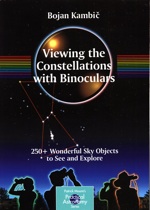 |

READ MORE |

The 100 Best Astrophotography Targets Ruben Kier

Astro-imaging has grown enormously in popularity in the last decade thanks to the ready availability of an impressive variety of affordable CCD cameras and Digital SLRs, as well as excellent image processing software. Accordingly, there is now a wealth of literature, both in the form of published books and articles available online, to suit the needs of advanced amateurs and novice imagers alike. So I found myself asking the question; “Is there really a need for yet another book on the subject of astrophotography?” To my great surprise I think the answer is an unreserved ‘yes’.
|

|
 |

READ MORE |

The Cosmic Connection Jeff Kanipe

This book gives a vivid account of the many ways in which human life might suddenly become extinct as a result of its dependence on natural phenomena...
|

|
 |

READ MORE |

Stargazing basics -
Getting Started in Recreational Astronomy
Paul Kinzer

Paul Kinzer's style of writing in Stargazing Basics could be described as very 'recreational', and his book is a very easy read. He begins by explaining why he wrote this book, and it is clear that he enjoys astronomy for pleasure, and wants to share this with the reader. At times you can sense the writer's frustration at the bad advice often given to new observers...
|

|
 |

READ MORE |

Exoplanets: Finding, Exploring and Understanding Alien Worlds
Chris Kitchin

This book by astronomy writer and BBC The Sky at Night regular Chris Kitchin examines the various methods used to detect and analyse exoplanets. It also explores topical subjects such as the environments on such planets, where they are found and whether they could make a good home-from-home for humans. Kitchin’s obvious expertise in this field means he goes into significantly greater depth than other books on the subject...
|

|
 |

READ MORE |

L

The Radio Sky and How to Observe It Jeff Lashley



The Georgian Star Michael Lemonick


David Levy's Guide to Eclipses, Transits, and Occultations David Levy



Victorian Popularizers of Science: Designing Nature for New Audiences Bernard Lightman


Exploring the Unknown Vol VIII: Human Spaceflight John Logsdon

This seventh volume of NASA's definitive history is timely, covering human spaceflight in the fortieth year since the first Moon landing. It has the full text of President Kennedy insisting in secret talks with the head of NASA in 1962 that putting a man on the Moon ahead of Russia must have top priority after defence...
|

|
 |

READ MORE |

Deep Space Propulsion: A Roadmap to Interstellar Flight
K F Long


Meteors and How to Observe Them Robert Lunsford


M

Deep Sky Video Astronomy Steve Massey & Steve Quirk

This is a very practical book from which even the most experienced video astronomers will be able to learn and gain new ideas for their deep-sky videography. Massey and Quirk help their readers to understand the nature of video and video cameras and in the first two chapters, CCD image sensors, interlaced TV images, video resolution and colour versus monochrome sensors are explained...
|

|
 |

READ MORE |


A Spectroscopic Atlas of Bright Stars: A pocket Field Guide Jack Martin

For many years amateur astronomers have contributed to the science of astronomy by measuring the brightness of stars, photometry. There is now a move afoot for some of the more advanced amateurs to move into the field of astronomical spectroscopy. This book is a tentative step in that direction...
|

|
 |

READ MORE |


Exploding Superstars Alain Mazure & Stephane Basa

Never have I read a book with such a misleading title. Yes, while Exploding Superstars does contain a couple of chapters on supernovae and gamma-ray bursts, it is clear that the authors have gone ahead and written a book about cosmology, with supernovae playing just a tangential part in what they can tell us about dark energy, the first stars and galaxies, and the ultimate fate of the Universe...
|

|
 |

READ MORE |


Clocks in the Sky - The Story of Pulsars Geoff McNamara

Presenting the story of pulsars might have been a difficult task in view of its history, which in astronomical terms is relatively short, being contained entirely within the period from 1967 to the present day. It is also a very human story in spite of being rather specialised from an astronomical point of view...
|

|
 |

READ MORE |


Frontiers of Propulsion Science Marc G Millis and Eric W Davis

The stars our destination: will we ever be able to venture out into deep space and voyage to nearby stars? Expanding on this month’s article about Project Icarus (pages 35–37), this hefty tome examines our current knowledge of advanced spacecraft propulsion as well as probing the possibilities of physics. Readers should be forewarned that the treatises inside this book are highly technical, but for those with a technical background and an interest in advanced propulsion this is an essential book...
|

|
 |

READ MORE |


The Caldwell Objects and How to Observe Them Martin Mobberley



Cataclysmic Cosmic Events and How to Observe Them Martin Mobberley




Hunting and Imaging Comets Martin Mobberley



GOTO Telescopes Under Suburban Skies Neale Monks


Chasing Shadows Clemency Montelle


Can you play cricket on Mars? Patrick Moore


Countdown! Or, How Nigh is the End Patrick Moore


Patrick Moore’s Data Book of Astronomy Patrick Moore and Robin Rees

Patrick Moore’s Data Book of Astronomy is a successor to both the Guinness Book of Records in Astronomy and the Astronomy Data Book and, as such, it has amassed a staggering amount of information amidst its nearly 600 pages. It is a solid brick of a book densely and meticulously constructed of myriad facts concerning everything in our Solar System and beyond...
|

|
 |

READ MORE |

The Sky At Night Patrick Moore


Introduction to Cosmology and Astronomy Ian Morison

There's a lot to understand about modern astronomy, and this handily sized book has a good go at covering pretty much all of it in just 341 pages! It's not the first to embark on a complete introduction to astronomy and cosmology, but it's certainly one of the better offerings...
|

|
 |

READ MORE |

The Cambridge Atlas of Herschel Objects James Mullaney and Wil Tirion

The book format is very similar to that of the Cambridge Double Star Atlas, with a set of superbly drawn charts by Wil Tirion marking around 2,500 deep sky objects discovered by the Herschels along with stars down to magnitude +7.5. A nice touch on the charts is the labelling of objects in blue and galaxies in orange so they show up under a red torch. There is also an extensive appendix relating the Herschel numbers to their more common NGC numbers. The brief introduction on the history of the Herschel objects includes a table with descriptions of the authors’ favourite 215 objects...
|

|
 |

READ MORE |


Full Meridian of Glory Paul Murdin

This superb book, subtitled Perilous Adventures in the Competition to Measure the Earth, is a fascinating account of the navigational and astronomical work instructed by the French Government to the Paris Academy of Sciences from the seventeenth to nineteenth centuries...
|

|
 |

READ MORE |


Secrets of the Universe Paul Murdin

Profusely illustrated in colour with some excellent photographs and diagrams, the text moves smoothly from local matters – the Earth, Moon and other planets – to stars, nebulae and galaxies, emphasising the discoveries by which we began to understand them. Each section begins with a brief history and proceeds to the modern view so that all can be read separately without waiting for the contents of a later section to provide back-up...
|

|
 |

READ MORE |


Mapping the Universe Paul Murdin

Subtitled An Interactive History of Astronomy this tactile book immerses you into the story of astronomy from Stonehenge and other ancient astronomical buildings, clocks and telescopes, through an Earth-centred Universe and astronomy's relationship with the church, eminent names including Copernicus, Brahe, Galileo and Kepler, all the way to modern astronomy and the likes of the Hubble, Spitzer and Chandra space telescopes...
|

|
 |

READ MORE |

N

Incoming! Or, Why We Should Stop Worrying and Learn to Love the Meteorite Ted Nield



Mars: A Cosmic Stepping Stone - Uncovering Humanity's Cosmic Context Kevin Nolan


Stars Above, Earth Below: A Guide to Astronomy in the National Parks Tyler Nordgren



Cosmos: An Illustrated History of Astronomy and Cosmology John North


Galileo Goes to Jail: and other myths about science and religion Ronald L. Numbers


O

Searching the Stars: The Story of Caroline Herschel Marilyn B Ogilvie

Female astronomers have had to overcome all kinds of social and educational barriers unknown to men in attaining a high level of proficiency in astronomy, and Caroline Herschel was a prime example. Dedicating her life to assisting her brother William and latterly her nephew John in their surveying of the heavens...
|

|
 |

READ MORE |


Observing the Night Sky with Binoculars Stephen O'Meara

As someone who is more familiar with big telescopes that have much smaller fields of view, I was a little cautious about this book's title. I really didn't think that I would get much pleasure from reading about what you could see with a pair of binoculars. However, O'Meara's book really did keep me interested from the outset...
|

|
 |

READ MORE |


Observing the Solar System with Binoculars Stephen O'Meara

Those who have heard Steve O’Meara speak at AstroFest will know of his engaging personality and infectious enthusiasm for his subject, which is usually, as here, visual observing in the traditional manner. He often describes himself as “A 19th-century astronomer in the 21st-century” – not there is anything backward-looking in his approach...
|

|
 |

READ MORE |


The Secret Deep Stephen O'Meara

Stephen James O’Meara is unquestionably one of the most celebrated visual observers of our age. Originally a planetary observer, in the past decade he has turned his attention to the treasures of the deep sky using refractors that are small even by modern standards. Having written a few well received books on the Messier, Herschel and Caldwell objects, I was expecting good things for this new book from the get-go. I wasn’t disappointed...
|

|
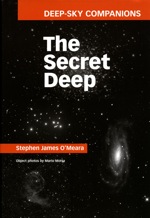 |

READ MORE |

P

Star Vistas - A Collection of Fine Art Astrophotography Greg Parker & Noel Carboni

Greg Parker and Noel Carboni are two names that will be familiar to anyone involved in astro imaging. Their collaboration via the Internet, with Greg imaging from his New Forest Observatory and Noel transforming the raw image data into spectacular deep space images from Florida needs no introduction...
|

|
 |

READ MORE |

The 4% Universe Richard Panek


Moonshot Dan Parry


The Power of Stars
Bryan E Penprase



A User's Guide to the Meade LXD55 and LXD75 Telescopes
Martin Peston


R

Falling Stars: A Guide to Meteors and Meteorites
Mike D Reynolds

This charming little book certainly lives up to its description of being "A straightforward and practical guide to all aspects of meteors and meteorites". Written in simple but not condescending language, this book is ideal for the beginning astronomer. It provides a detailed list of what you need for a dedicated meteor watching session as well as how to take notes on your observations, including meteor class, brightness, colour and length of trail, for example...
|

|
 |

READ MORE |

Making Every Photon Count
Steve Richards

Steve Richards’ images and online presence are well-known and, in taking the brave step to self publish this book, he has put into words and pictures just how he creates his superb images.
The book has a forward by none other than Sir Patrick Moore praising the approach Steve has taken, which unlike many other imaging guides and tutorial products, really does set out to lead the absolute beginner through all the steps of the imaging process...
|

|
 |

READ MORE |

The Monthly Sky Guide
(8th edition)
Ian Ridpath and Wil Tirion

Some introductory astronomy texts deserve to last the test of time. Ian Ridpath and Wil Tirion – two consummate professionals in the field – have teamed up to produce an exemplary text with first rate illustrations to inspire the beginning sky gazer. One can never take the responsibility of gently guiding a novice into the brave new world of amateur astronomy lightly, and as a consequence it is vitally important that the facts presented are accurate and clearly rendered. That is exactly what you get with this little gem of a book...
|

|
 |

READ MORE |

Apollo 11 - Haynes Owners' Workshop Manual
Christopher Riley & Phil Dolling

As every car owner knows, the ultimate guidebook to their pride and joy is the Haynes manual. These stalwarts of the garage forecourt cover the ins-and-outs of what goes on under the bonnet. Now translate that concept to the largest engineering project in human history, one with over seven million engineered parts, and a team of 400,000 individuals who put a ‘twin stand-up/seater’ module on the surface of the Moon with barely the power of a pocket watch in terms of computing, and the engineering capabilities of the 1960s, and you have the Haynes manual for Apollo 11...
|

|
 |

READ MORE |

Astronomers Anonymous
Steve Ringwood

Steve is no stranger to Astronomy Now readers. He has been writing entertaining stuff for decades and my first conscious recollection of a highly memorable Ringwood piece was his write up, in the BAA Journal, of a provincial meeting at Loughton during Patrick Moore’s presidency in August 1983...
|

|
 |

READ MORE |

Packing for Mars – The Curious Science of Life in Space
Mary Roach

When Ed White ventured out for the first-ever NASA space walk, he enjoyed it more than anyone had expected. So much so that Mission Control had serious difficulty getting him back inside. White was exhibiting one of the first recorded cases of 'space euphoria'...
|

|
 |

READ MORE |

Starlight: An introduction to Stellar Physics for Amateurs
Keith Robinson

There’s no escaping it: starlight, in its various guises, is the way in which we learn about much of the cosmos. In this lovely text on the physics of stars, Keith Robinson takes us by the hand in engaging and easy-to-understand language through topics that, at first glance, appear daunting. It’s nice to see mathematics explained at the very beginning of the text, so that even those with little maths to their name can quickly get up to speed...
|

|
 |

READ MORE |

Planets: A Very Short Introduction
David A Rothery

As you might imagine, I have read a number of books about the planets and our changing understanding of exactly how they formed, how they are today and what they can tell us about the Earth and its place in the cosmos. Well, don't let the sub-title of this book give you an impression that it is somehow not of any real value...
|

|
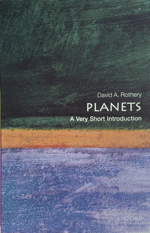 |

READ MORE |

The Tunguska Mystery
Vladimir Rubtsov

On 24 June 1908 an object exploded above the skies of Siberia, flattening some 2,000 square kilometres of forest. But what exactly was this body and how does it relate to other phenomena observed at the same time? For example, its arrival was preceded by strange electromagnetic atmospheric phenomena, some surviving trees showed accelerated growth, radiation levels peaked and there are curious enrichments of rare elements in the soil...
|

|
 |

READ MORE |

S

DVD: Cosmos Carl Sagan

Carl Sagan's hit television documentary series became the most watched public service television broadcast in the United States when it was first aired in 1980. Since then it has gone on to be seen by over 600 million people in more than 60 countries, and this is its first DVD release in the UK. I have to admit I had only ever seen snippets of the show, but of course knew of the legendary Sagan, so I was quite excited to get this chance to watch Cosmos for the first time. I wasn't disappointed...
|

|
 |

READ MORE |

The Race: The Story of the Moon Race between Russia and America James Schefter

Competition motivates, and the space race between the two twentieth century superpowers, the USSR and the USA, ended with twelve men walking on the Moon between July 1969 and December 1972. James Schefter was in the thick of it, a journalist for Texas' Houston Chronicle. He interviewed the astronauts. He reported on the launches. He has talked with Sergei Khrushchev, the son of the USSR Party Chairman, and with Roger Launius, the NASA historian. But what is more important is that he knows how to tell a good story...
|

|
 |

READ MORE |

Atlas of Astronomical Discoveries Govert Schilling

In 2006, the IAU conference in Govert Schilling has put together a really fine catalogue charting the major astronomical discoveries from 1609 to 2008. Effectively, he covers the age of the telescope and I am pleased that there are some wonderful large colourful images to support it...
|

|
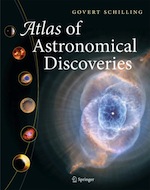 |

READ MORE |

The Hunt for Planet X Govert Schilling

In 2006, the IAU conference in Prague that sealed the fate of Pluto failed miserably to educate the public as to the nature of planets and dwarf planets. Govert Schilling's new book cuts hrough the confusion like a knife to tell the story of the Solar System's outermost bodies...
|

|
 |

READ MORE |

Eyes on the Skies Govert Schilling and
Lars Lindberg Christensen

The attractive Eyes on the Skies – 400 Years of Telescopic Discovery is one of the most accessible books I have ever read. Released as part of the International Year of Astronomy, it brings the reader a history of telescopes from their beginnings to the present day...
|

|
 |

READ MORE |

Comets and How to Observe Them Richard Schmude

Richard Schmude’s passion for astronomy, and the chemistry of comets in particular, brings to the table a book that covers almost every point in the comet observer’s arsenal. Kicking off with an overview of standard naming nomenclature, he deftly moves into a review of the laws of orbital mechanics, without diving too deeply into the mathematics, and in a way in that everyone should easily grasp...
|

|
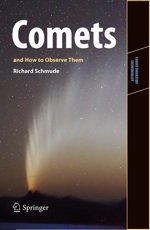 |

READ MORE |

We Are Not Alone - Why We Have Already Found Extraterrestrial Life Dirk Schulze-Makuch and David Darling


Weird Astronomy: Tales of Unusual, Bizarre and Other Hard to Explain Observations
David A J Seargent


Martian Outpost - The Challenges of Establishing a Human Settlement on Mars
Erik Seedhouse


Space Probes: 50 Years of Exploration from Luna 1 to New Horizons
Philipe Séguéla


A Passion for the Planets
William Sheehan


The Kaguya Lunar Atlas
Motomaro Shirao and Charles Wood


Confessions of an Alien Hunter
Seth Shostak


Carl Sagan: A Biography
Ray Spangenburg and Kit Moser


Searching For Extraterrestrial Intelligence: SETI Past, Present and Future
H Paul Shuch


Horizons of Cosmology: Exploring Worlds Seen and Unseen
Joseph Silk


Meteorites
Caroline Smith, Sara Russell and Gretchen Benedix


Hubble: Window on the Universe
Giles Sparrow


Observing and Cataloguing Nebulae and Star Clusters Wolfgang Steinicke


Live TV From the Moon Dwight Steven-Boniecki


One Small Step Jerry Stone


Atlas of the Messier Objects Ronald Stoyan,
Stefan Binnewies, Susanne Friedrich and Klaus-Peter Schroeder

Messier's catalogue is the most famous and popular collection of 110 deep sky objects, ranging from galaxies and nebulae to star clusters. Previous publications by Mallas and Kreimer, Glyn-Johns and O'Meara have more than ably informed and guided observers in the past...
|

|
 |

READ MORE |

How Spacecraft Fly Graham Swinerd

There are hundreds of satellites orbiting the Earth, but how are these satellites designed and controlled? What hazards do they face and how do they get into orbit in the first place? Once the fundamental principles and basic orbits have been described, the author goes on to examine real orbits, as he puts it. These involve dealing with gravity anomalies, extraneous third body forces, aerodynamic forces and solar radiation...
|

|
 |

READ MORE |

T

The Scientific Exploration of Mars
Fredric W Taylor

This is a brilliant book! Professor Fred Taylor of Oxford University - a veteran of many robotic missions to the planets including Viking, Mars Express, Venus Express and the Galileo mission to Jupiter - has chronicled our exploration of the red planet in erudite and accessible fashion...
|

|
 |

READ MORE |

Stepping Stones to the Stars: The Story of Manned Spaceflight
Terry C Treadwell

The story of a Russian space drama matching in excitement NASA’s Apollo 13 is told for the first time in this latest history of manned spaceflight. The facts and figures of every manned spaceflight from Russia’s Gagarin to the final Shuttle missions at the end of 2010 are packed into 220 pages, and most are familiar. But the author has had unusual additions provided by Colonel Vladimir Kondratenko former Commander of Russia’s Test Pilot School, as well as NASA’s veteran astronauts Hank Hartsfield and Bruce McCandless...
|

|
 |

READ MORE |


The Cambridge Star Atlas (Fourth Edition)
Wil Tirion

The fourth edition of the Cambridge Star Atlas continues in the tradition of its predecessors in that the star charts are well drawn and clearly labelled. However this new edition also includes some new features not seen in previous editions. These include a map of the Moon for both normal and reversed views for observers with binoculars and small telescopes, along with maps showing the distribution of deep sky objects such as planetary nebulae and galaxies to show how they relate to the Milky Way...
|

|
 |

READ MORE |

V

Civilisations Beyond Earth: Extraterrestrial Life and Society
Douglas A Vakoch and Albert A Harrison

This one is a little bit different to the usual tomes on SETI – the Search for Extraterrestrial Intelligence – that fill the bookshelves. For years sections of the SETI community have bemoaned the fact that the social sciences are often sidelined in favour of the hard sciences when it comes to SETI discussion...
|

|
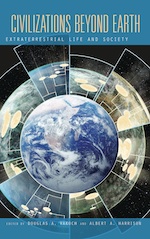 |

READ MORE |

Solar Sails -
A Novel Approach To Interplanetary Travel
Givanni Vulpetti, Les Johnson, Gregory L. Matloff

In the early twentieth century Swedish chemist Svante August Arrhenius suggested that solar pressure might diffuse life through the Solar System, and in the 1920s Russian scientists Konstantin Tsiolkovsky and Friedrich Arturowitsch Zander wrote that a very thin space sheet, pushed by solar-light pressure, should be able to achieve high speeds in space...
|

|
 |

READ MORE |

W

Hubble: A Journey Through Space and Time
Edward J. Weiler

This book describes itself on the dust jacket as “an authoritative account of the observatory that has revolutionized astronomy and photography in our time”. Good I thought to myself because there are quite enough coffee table books about the Hubble space telescope that are little more than a collection of attractive pictures...
|

|
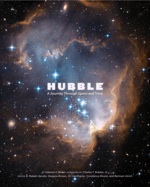 |

READ MORE |

One Small Step: The Inside Story of Space Exploration
David Whitehouse

Nobody thought that manned space exploration would be easy, or that the rate of progress would be fast. We seem to have had our first race and are now, hopefully, catching our breath before the next big push. Now is an ideal time for a well-considered history of the subject and Dr David Whitehouse, the space scientist and former BBC science correspondent, has provided a superb one...
|

|
 |

READ MORE |

Advancing Variable Star Astronomy
Thomas R Williams and Michael S Saladyga

Despite the title, this is not a book about variable star observing or about variable stars. It is a book about a group of people who founded, maintained and developed a group of enthusiastic observers. It just so happens that the organisation is the American Association of Variable Star Observers (AAVSO)...
|

|
 |

READ MORE |

The Isaac Newton Telescope at Herstmonceux and on La Palma
Anthony Wilson

This slim, beautifully illustrated paperback book looks at the history of the Isaac Newton Telescope, formerly sited at Herstmonceux and now at La Palma in the Canary Islands, from its inception in the late forties to the present day. Divided into two sections, the first part covers its conception, the numerous problems and delays that were encountered, and the endless committees that were formed to discuss the various type of optics that it should have...
|

|
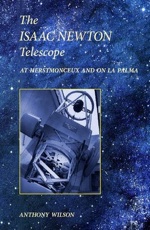 |

READ MORE |

The Moon in Close-up: A Next Generation Astronomer's Guide
John Wilkinson

This book intends to make use of the geological and topographical discoveries by recent space probes in order to better inform the lunar observer. Chapter One is a general introduction to the Moon. I thought that the section on the Moon's orbit was rather over-simplified and needed beefing up a little, and a diagram would have helped in the part about libration....
|

|
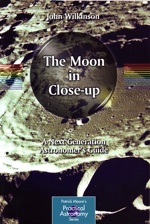 |

READ MORE |

Hindsight and Popular Astronomy
Alan B Whiting

Author Alan Whiting attempts to explain where nine astronomy books, published at various times between 1833 and 1929, may have revealed errors by their authors, ranging from Sir John Herschel to Sir James Jeans. “The aim of this highly accessible book”, we are told by the publisher “is to develop tools for the non-scientist to evaluate the strange and marvelous results that astronomers report...
|

|
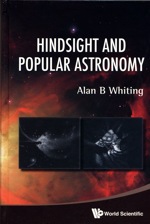 |

READ MORE |

Falling to Earth: An Apollo 15 Astronaut’s Journey to Earth
Al Worden with Francis French

Falling to Earth is Al Worden's autobiography, written with space historian Francis French. Worden has published the story of his mission as Apollo 15’s command module pilot and its immediate aftermath of what came to be known as the ‘covers incident’ as the centrepiece. With a foreword by Dick Gordon, an epilogue by Tom Stafford and further praise on the back cover from Michael Collins, Buzz Aldrin and John Glenn, Worden has finally received the personal redemption from those that he considers matter most – his fellow astronauts...
|

|
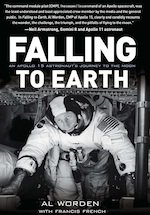 |

READ MORE |
|
 |
 |
 |
|

